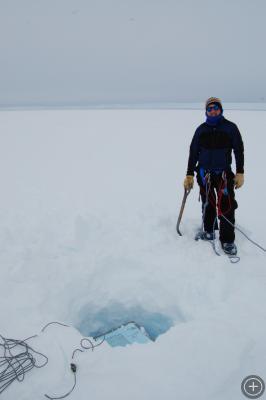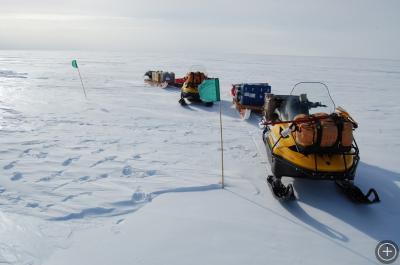One Month in the Deep Field, Part 2
CHRISTCHURCH, NEW ZEALAND– When you’re in the deep field, your only means of communication with the rest of the world is a satellite phone. There’s no internet and no email. With our field season complete, I’m back in Christchurch and back in touch, with lots to report about our month in the field. Here’s my second installment.
We spent the first week or so in the deep field visiting GPS stations that were left out on the ice over-winter and setting out passive seismometers. Whillans Ice Stream behaves in a unique way – it slips twice a day in episodes that are linked to the tidal cycle. The passive seismometers record this slip, because it is a rupture similar to an earthquake, but much slower.

Here I’ve dug a hole and then placed a passive seismometer in the hole. I am roped in due to crevasses in the area.
To get to all of our sites, we used Ski-doos with sledges attached to the rear with all our science and safety gear attached. During setup, at the beginning of the season, and takedown, at the end, Slawek and I would go on rides covering over 150 km and lasting 9-10 hours. It is hard not to hesitate getting on the Skidoos in the morning, when the temperature is at 20 degrees below zero Celsius and there is already a 20 knot wind blowing, knowing you will be going 30 mph sometimes directly into it!
Because our bodies have to generate all this heat, it is important to stay well-fed and healthy out on the ice. One of the breakfast favorites was frozen eggs. In the video, you see a block of eggs sizzling on the pan. In order to break off a chunk from the main supply, a hacksaw and hammer/chisel are required.
Get the Flash Player to see this player.

 No comments
No comments 








